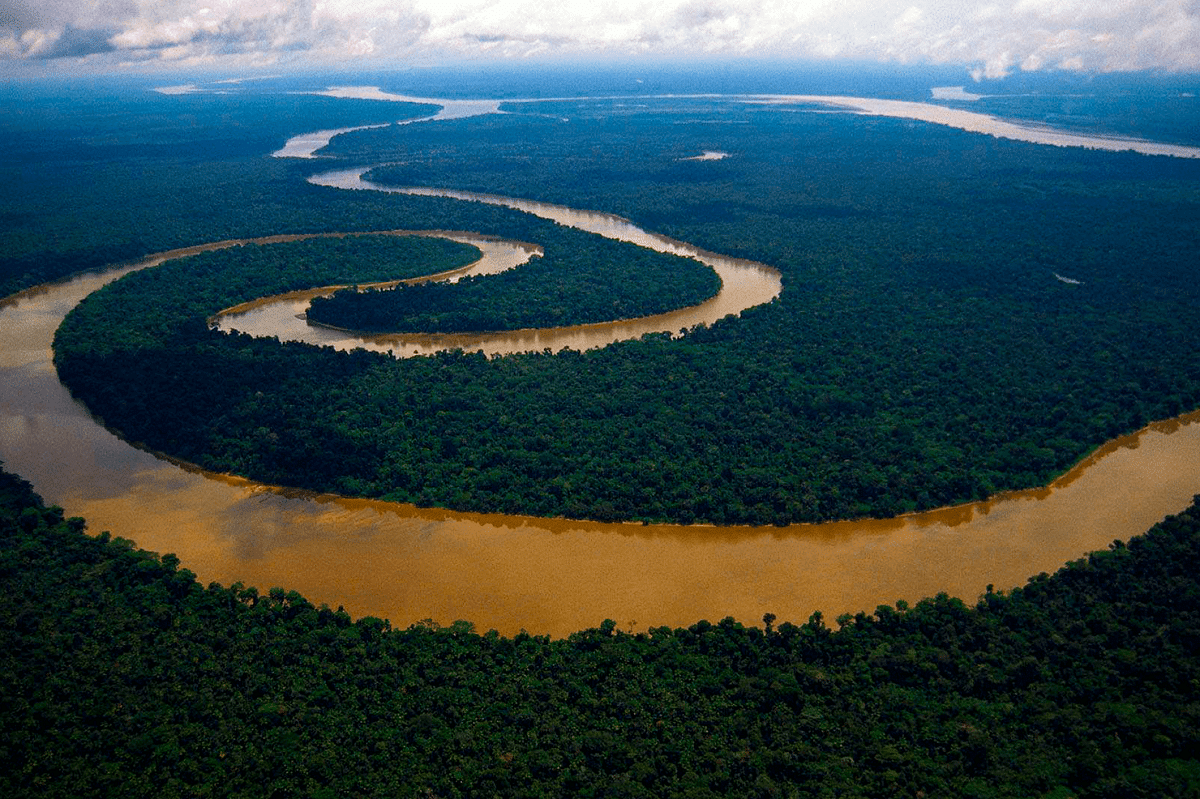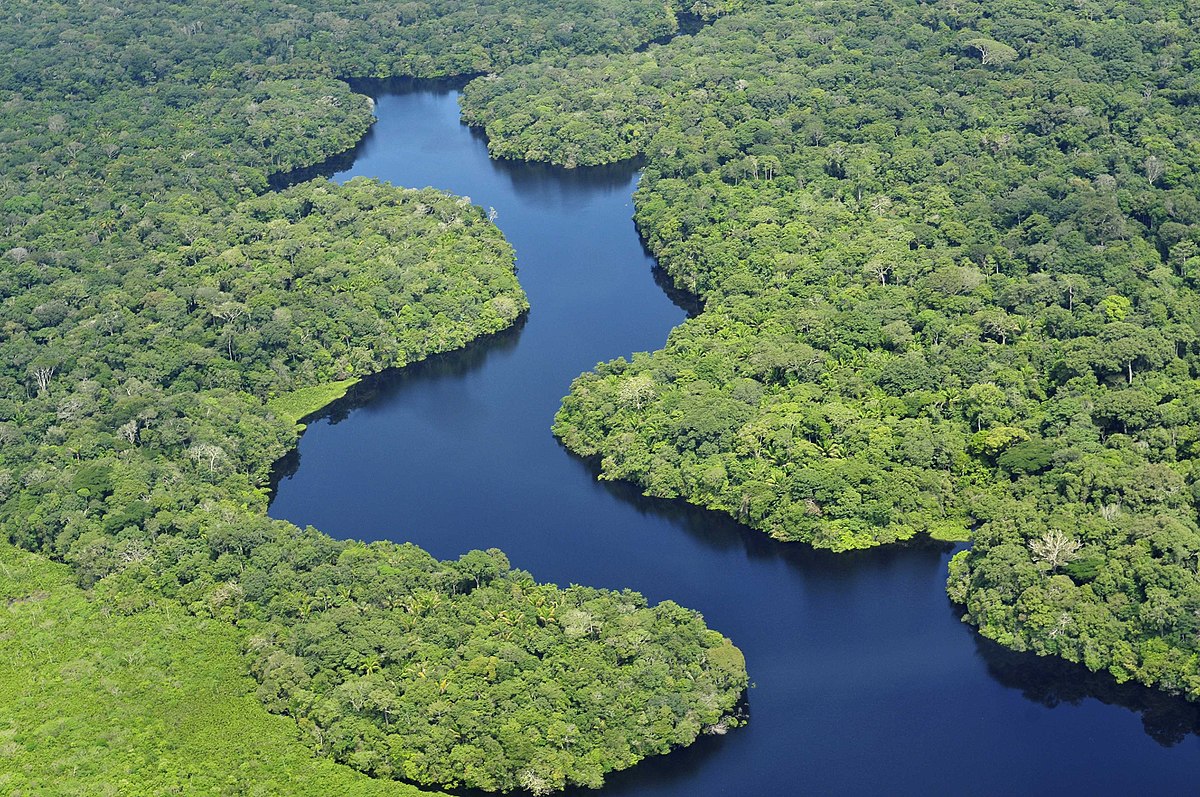
One of the best known rivers in the world for being the largest and the main river in South America is the Amazon River. The reason it is the largest river in the world is because it carries more water than the Nile, Yangtze and the Mississippi together. Being such a mighty river and with such a large hydrographic basin it feeds the entire region and the thousands of species of living beings, many of which have not yet been classified.
In this article we are going to tell you about all the characteristics, geology and formation of the Amazon River.
Key features

It is a river that is located in South America and the main water it has is fresh. It flows from the Andes in Peru, where meltwater feeds this river at a height of almost 6.000 meters. This river runs throughout the region to Brazil, which is where it already empties into the Atlantic Ocean. It can be said that the hydrographic basin of this river is larger than any other river. It has dimensions of 7 million square kilometers. That is, the hydrographic basin of the Amazon River covers 40% of the entire territory of South America.
Throughout its journey it passes through parts of Brazil, Bolivia, Colombia, Ecuador, Guyana, Venezuela, Peru and Suriname. All these countries take advantage of the water of the Amazon River in one way or another. Such is the importance of this river that, around it, the entire jungle extends it is known worldwide as the lung of the planet.
It is estimated that the average amount of water that is discharged into the Atlantic is about 209.000 cubic meters per second of water, which amounts to 6591 cubic kilometers per year. This amount of water helps and has helped indigenous peoples throughout history to establish populations around rivers. As is known, in ancient times a stable water course was needed to prepare and establish a whole population around it. If water could not have development of humanity.
The depth of the river varies in some areas. The lowest parts are recorded at a depth of 20 meters, while the deepest areas reach 90-100 meters. The width would also give along its route. There are places, especially at the beginning, that have widths of approximately 1.6 kilometers. However, the maximum width recorded is 10 kilometers. It should be noted that during the wet season the flow of the river grows exponentially and makes the width that it can reach reaches up to 50 kilometers.
To be able to house such a quantity of water, it is necessary that it have many tributaries. And is that the Amazon River has 1100 tributaries along its more than 6.400 kilometers in length. Some of the main tributaries that are the rivers that provide the most water are the Napo, Pastaza, Caquetá, Chambira, Tapajós, Nanay and Huallaga rivers. The longest tributary of the Amazon is the Madeira River.
Although it is the largest river in the world, it continues to fight for the first place with the Nile River in a matter of length. The origin of this river is still not entirely clear, so it is still thought that the Nile River is the longest in the world.
Formation of the Amazon River

The entire fluvial system of this river is made up of said river and all its tributaries. The tributaries refer to the tributaries that provide a flow of water to the main river. This river does not move in a straight line but rathere is forming a meandering figure from the Peruvian Andes to the north and then to the east. The curvature of these meandering figures are known as meanders. These meanders are rich in organic matter since there are many sediments that are going to hit and give formation to a new relief.
These meanders erode all the surrounding terrain over time. In such a way that, over the years and years of erosion ends and modifies the entire terrain and, therefore, also affects the ecosystems. And it is that, depending on the annual rainfall and the rain regime and intensity We can see that the transformative power of the Amazon River is quite important.
The system is joined by Orinoco river and keeps flowing until it forms a delta up to 320 kilometers wide. It can be said that it does not actually have a delta itself, but that it is the currents of the Atlantic Ocean and the force of the tides that prevent it from being deposited in the sediments. One of the main aspects of this river is that, along its course, it has rapids and waterfalls that make navigation difficult. This is due to the fact that the incorporation of new flows by the tributaries causes areas of vertiginous currents.
There are numerous geological studies that suggest that the Amazon River originated during the Miocene period. This happened approximately 12 million years ago. It was born primarily as a transcontinental river at a time when present-day South America and Africa were united in a single supercontinent known as Gondwana. It is thought that due to the incline, the Amazon River flowed from east to west and not as they do today.
The elevation of land and the formation of the Andes took place at the end of the cretaceous period. This happened as a consequence of a collision of tectonic plates known as the Nazca and the South American plate. This clash of plates caused all the water to turn into an inland sea and that, little by little, it was acquiring swampy characteristics. It was then when, 11 million years ago, the water could flow towards the lower lands due to the blockage that existed of a flow of water caused by the Andes and finally emptying into the ocean.
The current shape of the Amazon River dates to about 2.4 million years ago. This makes it one of the youngest rivers.
I hope that with this information you can learn more about the Amazon River.